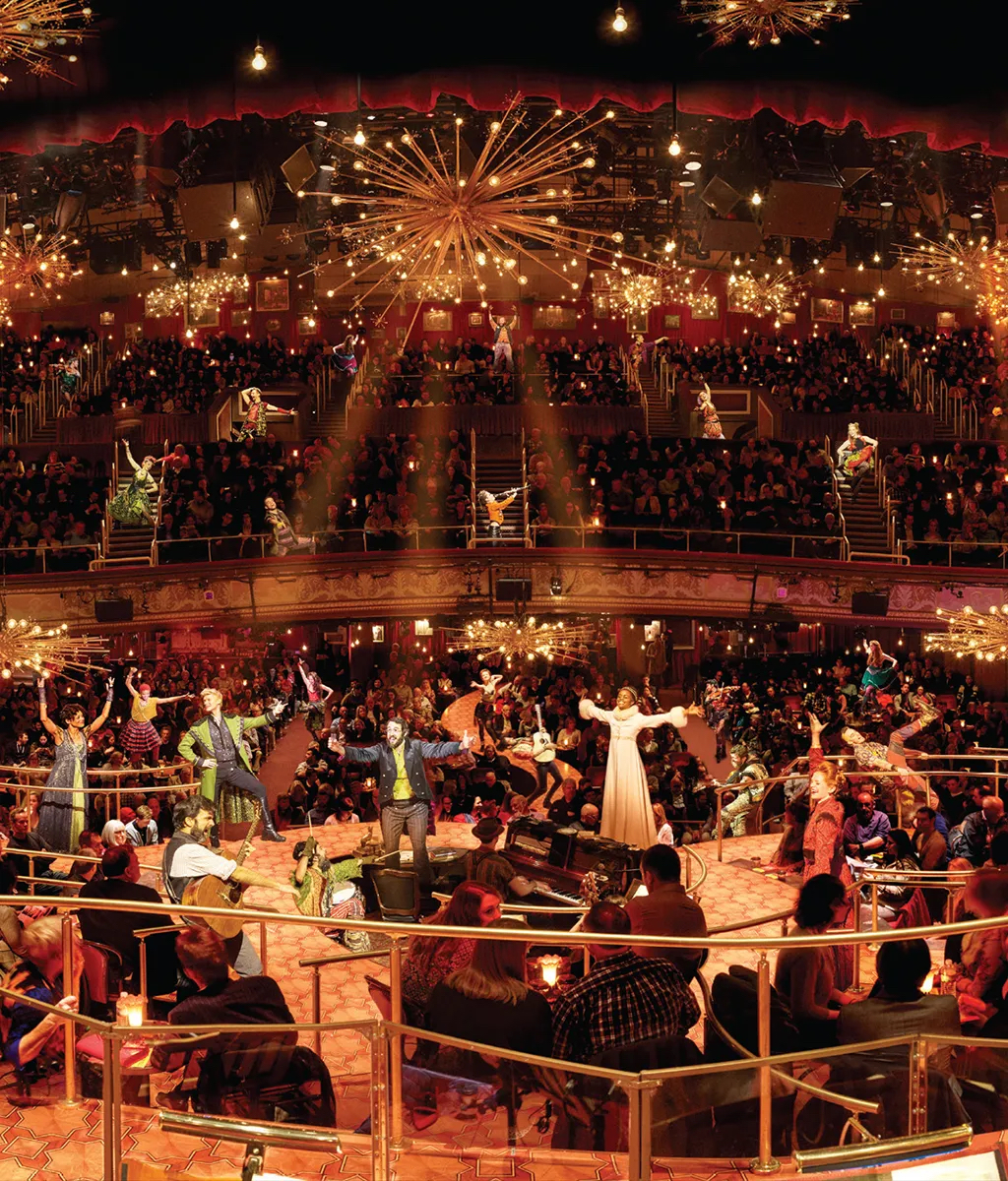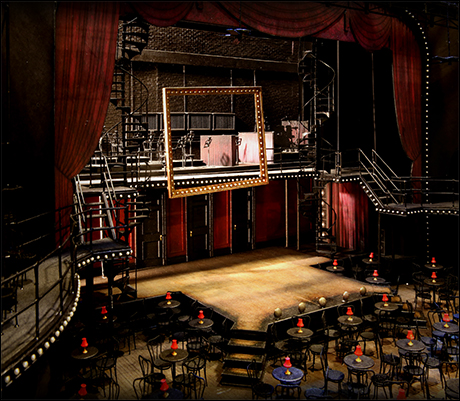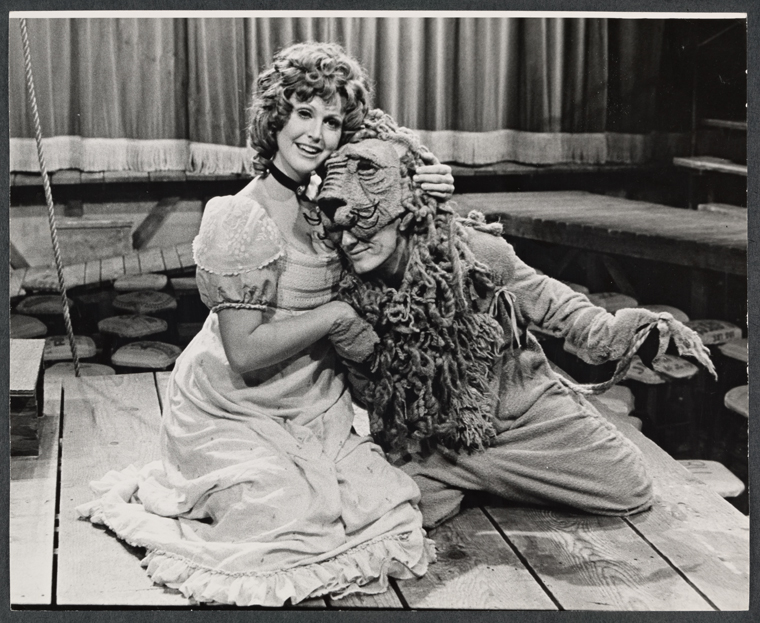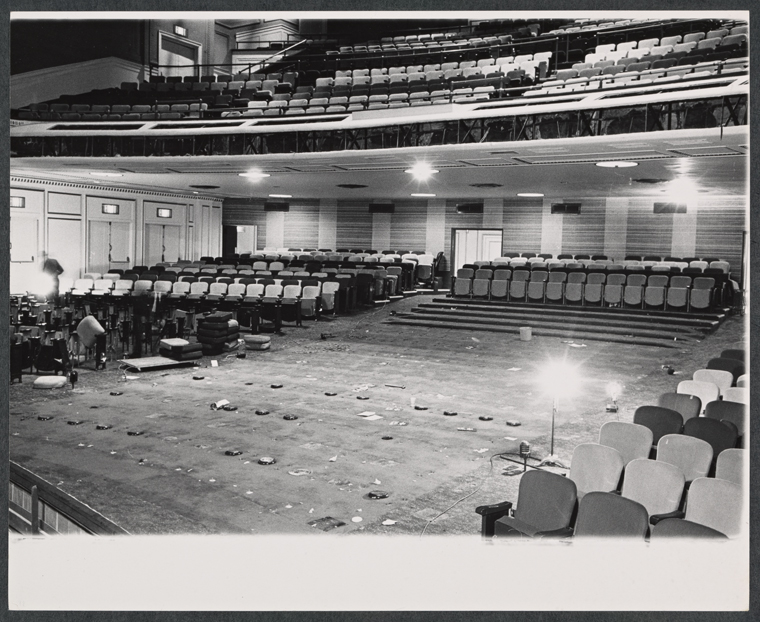by Ben Togut
Through her work as a circus designer, Shana Carroll strives to tell deeply human stories. When she was approached to collaborate on Water for Elephants, Carroll jumped at the chance, embracing the opportunity to accomplish meaningful storytelling using the visual language of circus.
“I felt like there was potential to have deep and powerful work with circus language,” Carroll said. “Partly because of the story, but also because of the composing team [PigPen Theatre Co.]. They also have a grit and a depth and a humanity to their work [that] I felt was similar to how I approach the circus and my work.”
The depth and humanity of circus are the reasons why Carroll was drawn to the art form in the first place. She recalls the moment she fell in love with the circus—newly eighteen, stepping into the old church where the Pickle Family Circus rehearsed, transfixed by the aerialists that dangled before her.
“I walked in and saw the trapeze artists 10 feet from me,” Shana said. “Seeing it so close up and seeing them with training clothes and messy hair, I suddenly saw the human being inside of it and just how moving and beautiful it was and how real it was. In theatre, we’re always trying to find metaphors for freedom and flight or stakes, and these were like very real stakes and very real feelings of freedom and flight.”
From then on, Carroll decided to devote her life to becoming a trapeze artist. She attended circus school in Montreal and was later involved with the Cirque du Soleil show Saltimbanco. While performing as a trapeze artist, Carroll was deeply involved with directing and coming up with new acts. Soon after founding the circus collective The Seven Fingers in 2002, Carroll shifted focus, committing herself to directing and choreographing full-time.
“I really just got so much more out of being able to work with other people and watch their progress and try to find the artist in them and the brilliance in them and the beauty in them and then also write shows,” Carroll explained.
A pivotal step in Carroll’s creative process for Water for Elephants was determining how circus functions as a narrative device in the musical. By looking through the script and spending time with the characters, Carroll came to see Water for Elephants as a memory play, where the “surreal capacity of circus language” allows the protagonist Jacob Jankowski to revisit the memories of his youth.
One scene in the show that illustrates the work Carroll strives to achieve through circus language happens during the raising of a circus tent soon after Jacob joins the traveling company.
“It’s the moment he’s falling in love with the circus, and so we want to make that feel sparkly and exciting and spectacular,” Carroll explained. “But also the sense of family and community which is so much why we fall in love with the circus. You need to throw someone and catch someone and hold them on your shoulders, and so it sort of speaks to the family element, just in the pure mechanics of circus language.”
Helping establish this feeling of interdependence among performers is a critical part of Carroll’s work as a circus designer. While actors and dancers are accustomed to working as an ensemble, performers often face a steep learning curve when real risk is involved as they must prioritize the safety of their castmates above their own.
“Everyone needs to adopt that feeling that everyone has everyone’s lives in their hands,” Carroll said. “Even if you’re not catching someone, you have their life in your hands. I think that’s one reason there’s been this really incredible camaraderie and bonding and spirit in the cast, because they have absorbed that.”
For Carroll, one of the most rewarding parts of working on Water for Elephants has been watching members of the cast and creative team appreciate the circus she treasures, the circus she fell in love with seeing trapeze artists all those years ago.
“I like the circus when we identify with the human on stage and then connect to the human on stage,” Carroll explained. “We care about the fact they’re hanging by one foot or standing on someone’s head and we care for them and their safety because we’ve somehow connected to them as a human.”
Water for Elephants is now playing at Broadway’s Imperial Theatre.







